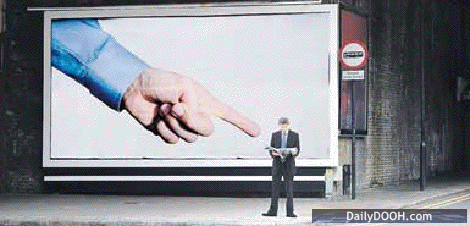Billboards 2.0
Adrian J Cotterill, Editor-in-Chief

Interesting article in the Times this weekend in the UK entitled “Digital advertising is watching you”
When we started to read this over our coffee and croissants we thought ‘oh my god another hatchet job on audience measurement’ but the author Mark Harris has done a pretty fair job in reporting – though there are not surprisingly with the intricacies of automated audience measurement a couple of factual errors which we discuss at the end of this post.
Holosonic, a US company similar to Panphonics; and Quividi and Motomedia (French and British companies respectively) get good mentions…
Digital advertising is watching you
High street ads are becoming more alluring by using smells and 3-D – and more intrusive by filming your reactions Interactive billboardsMark Harris
Think of them as billboards 2.0. Where traditional hoardings – flapping paper promoting outdated products – once stood, digital adverts are now watching you watching them. Think you can ignore them? Think again. The latest ads use smells and 3-D visuals to catch your attention, even beaming sound messages to cut through the clamour of a busy street.
Whereas advertisers were once happy simply to place posters for doughnuts near police stations, they now insist on knowing who is viewing their adverts. Companies such as Quividi, a French marketing technology firm, are happy to oblige.
Quividi installs camera systems in billboards and a computer analyses passers-by. “We know this many people have walked in front of the screen, how many turned to face the ad, and how long they looked at it,” says Paolo Prandoni, Quividi’s chief scientific officer. “We can even tell their gender with an accuracy of 85% and measure who approaches to find out more.”
Quividi has digital adverts that change depending on whether a man or woman is watching and is working on upgrading its system to detect different ages and even family groups. The company insists no data are permanently recorded.
One customer of Quividi is Motomedia, a Glasgow advertising agency that specialises in interactive shop windows. A campaign for the ITV show Pushing Daisies used sound, video and even a vent pumping out the smell of freshly cut grass, all controlled by Quividi’s technology.
Kenny Maclean, Motomedia’s founder, says: “This is a society where all businesses measure the performance of consumers. Audience measurement showed that our original static advert wasn’t effective, so we put the video on a four-minute loop.”
Holosonic, a US technology company, is taking the idea one step further. It has developed the Audio Spotlight, a system that fires a beam of sound onto a small area from a distance of more than 60ft. The effect, the company claims, is to “startle and entertain” pedestrians without being audible to anyone outside the zone.
If that wasn’t intrusive enough, three Xscape ski centres are the first UK locations to use 3-D ads with images that “jump out” 2ft from the screen.
Can we expect 3-D soap packets and jingles beamed into our heads as we commute to work? Roadside billboards require planning permission that can be refused on the grounds of road safety or local amenity – hurdles that video screens and sound beams are unlikely to clear. High street shopping is another matter. A legal loophole means even noisy, smelly shop windows don’t require planning permission, just a local authority advertising permit.
One scrap of comfort comes from Bill Wilson of the Outdoor Advertising Association. “We did see talking posters in the past,” he says, “and the number of complaints was incredible.”
Our main point of contention with the editorial here is the statement “Quividi installs camera systems in billboards” and the association between screens and cameras and then screens and billboards.
Screens with cameras Yes BUT cameras on billboards No, we don’t think so!!
We don’t believe that any of the automated audience measurement systems based on gaze / face recognition / eye tracking on the market at the moment can handle (a screen) the size of a billboard.
Remember that when Motomedia talk about their StreetLevelBillboards in shop windows – the vast majority of the window is a vinyl wrap – the screen is a tiny proportion of the overall affect.

Follow DailyDOOH